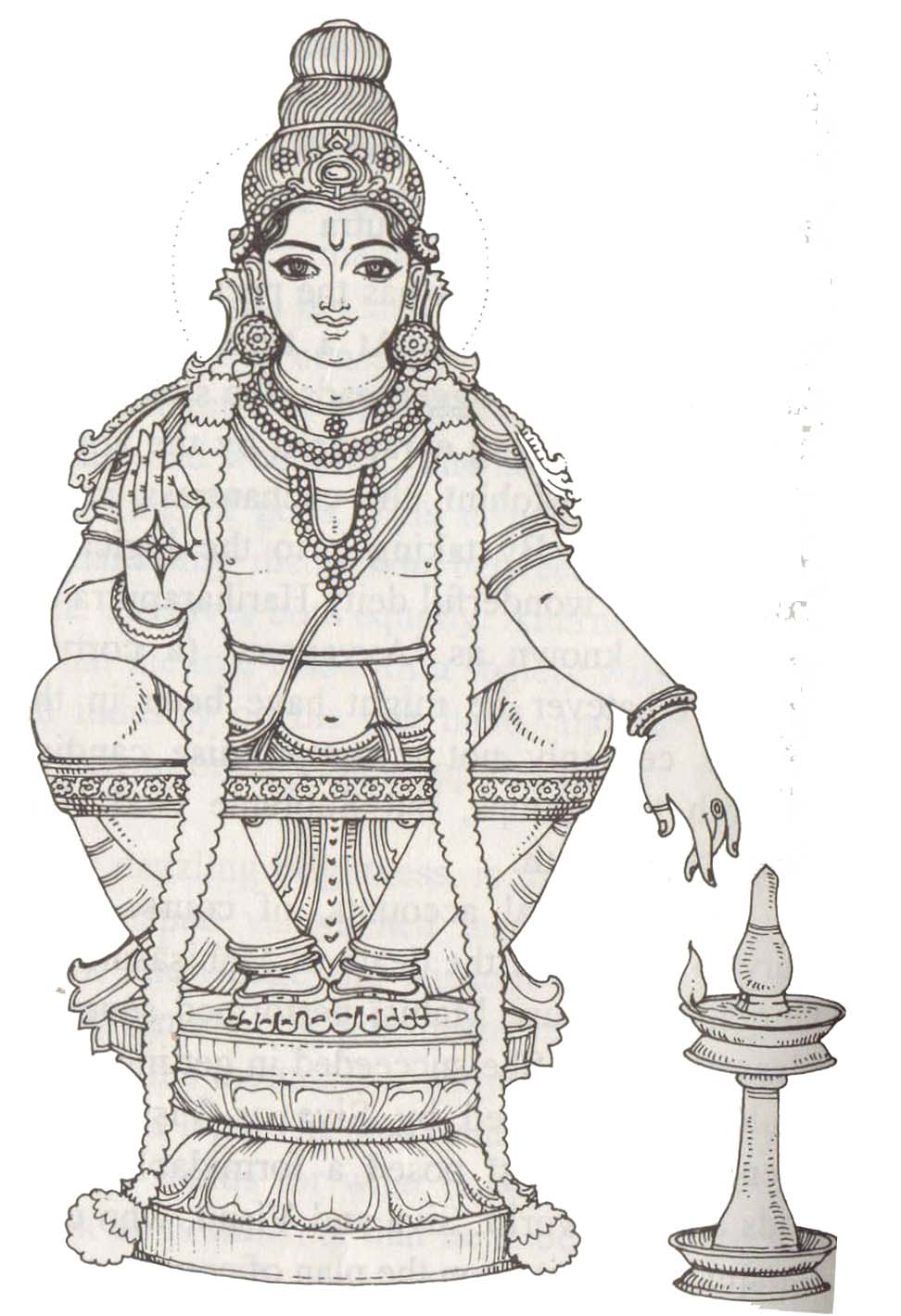| |

The Hindu genius
has the peculiar
virtue of reconcil¬
ing the
irreconcilables. At
a time when the
Saivas and
Vai~l).avas were at
loggerheads, the
story in the
Bhiigavata
(8.12), of Siva
being enraptured by
the voluptuous
beauty
of (Vi~l).u as)
Mohinl, the
enchantress, must
have come
in very handy. By
taking it to the
logical conclusion
it
produced the
wonderful deity
Hariharaputra or
Sasta, more
commonly known as 'A
yyappan ' (a
corrupted form of
Arya). Whatever he
might have been in
the beginning,
he was certainly not
a compromise
candidate tolerated
by both the groups,
but Supreme God
Himself, highly
venerated by both.
Mythological
accounts, of course,
have their own
story to tell. After
the death of
Mahi~asura at the
hands of
Durga, his spouse
Mahi~l performed
severe austerities
to please Brahma.
She succeeded in
getting the boon
that she could not
be killed by Siva or
Vi~l).u. This
newfound
strength of Mahi~l
posed a formidable
challenge to the
gods and the world.
Siva and Vi~I:1u,
who could not singly
vanquish her, hit
upon the plan of
coming together to
create
her destroyer. The
child thus created
was found by King
Rajasekhara of
Panthalam in Kerala
who named it as
MaI:1ika9~han and
brought it up as his
own son, since he
had
no offspring. When
MaI:likaI:l!han was
twelve years old, he
killed Mahi~I and
brought leopardesses
to his father's
palace since their
milk was needed to
cure the 'headache'
of the queen.
Meanwhile to the
king had been
revealed the secret
of MaI:likaI:l!han
being God Himself.
Adored by the king
MaI:likaI:l!han
disappeared, after
instructing him to
build a temple at
the place where his
arrow would land.
That was the summit
of the hill
Sabanmalai. The
temple is said to
have been built by
Visvakarma and the
image prepared and
installed by
Parasurama. The
place attracts
millions of pilgrims
even now.
The word 'Sasta'
means one who
controls and rules
over the whole
world. Mahasasta and
Dharmasasta are the
other names by which
the deity is known.
'Sasta' is one of
the names of Buddha.
The deity is said to
ride on a white
elephant called
Yogi. He is also
described as the
protector of Dharma.
Hence some scholars
opine that Dharma-Sasta
may be Buddha
absorbed into the
Hindu pantheon by
the South Indian
Hindus.
The image of Sasta
has four arms, three
eyes and a peaceful
countenance, and is
seated in Padmasana.
Two of the hands
carry the sword and
the shield and the
other two exhibit
the Abhaya and
Varada Mudras.
According to another
version, the image
should have only two
hands and two eyes,
and should be seated
with the legs
folded. It should be
bedecked. with
ornaments and
have the
YajfiopavIta. A
crooked stick,
fruits and tender
leaves of plants are
sometimes shown in
his hands. A
VajradaI:lQa is also
shown occasionally.
Images in the
standing posture are
also seen to exist,
though rare.
The ritual
pilgrimage to the
shrine of Sri
Ayyappan at
Sabarlmalai is
considered to be
extrem~ly auspicious
and meritorious. The
pilgrimage itself
has to be preceded
by forty-one days of
austerity during
which period strict
celibacy is to be
observed as also
restrictions
regarding food,
speech and sleep. |
|

